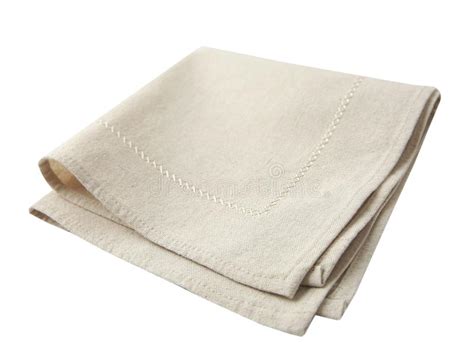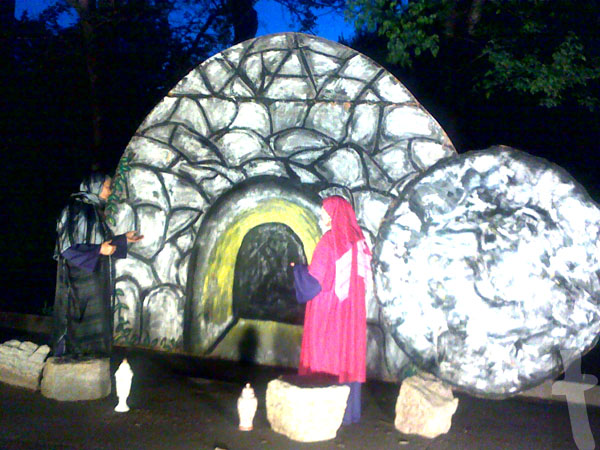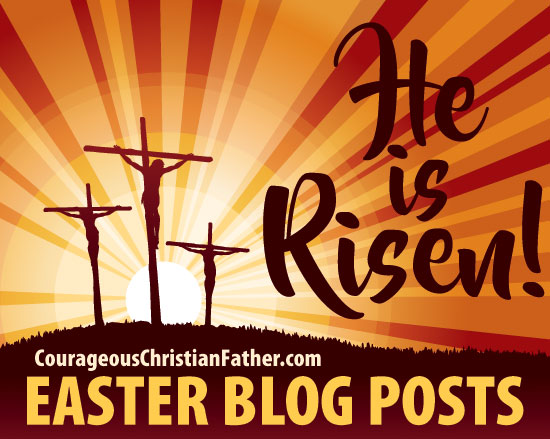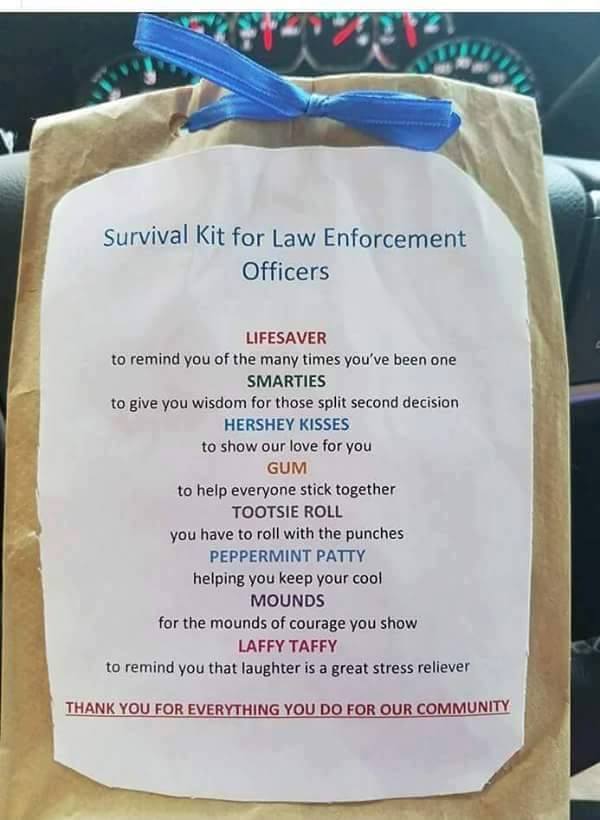Why did Jesus Fold the Napkin? – Folded Napkin in the tomb of Jesus brings people to wonder why did Jesus fold the napkin? Why did Jesus fold the burial cloth? on His Resurrection?
Why did Jesus Fold the Napkin?
I am sure you seen this story going around on the internet. With Easter coming up and the resurrection of Jesus I figured I would share this story. I saw this on Facebook. I am going to share with you the story and some research that I have done on this story. This story has been around since 2007 (maybe longer). I am also sure that some of this story has changed in some ways over those years too. There might be some differences or variations of this story.

This is a popular story that usually you hear about a lot during Easter, Resurrection Sunday. Easter can call as early as March and as late as April. This story you can say is a Springtime story. But, I believe this is notable any time of the year to learn about this story and if it has any significant meaning to it.
… and the handkerchief that had been around His head, not lying with the linen cloths, but folded together in a place by itself.
John 20:7 – Where the Story is based.
Why did Jesus Fold the Napkin?
Why did Jesus Fold the Burial Cloth?

Image from Trail to the Empty Tomb.
Why did Jesus fold the napkin or known as the linen burial cloth after His resurrection? I never noticed this….
The Gospel of John (John 20:7) tells us that the napkin, or known as the burial cloth, placed over the face of Jesus, was not just thrown aside like the grave-clothes.
The Bible takes an entire verse to tell us that the napkin was neatly folded, and placed at the head of that stony coffin.
Why did Jesus Fold the Napkin? – Folded Napkin in the tomb of Jesus brings people to wonder why did Jesus fold the napkin? why did Jesus fold the burial cloth? on His Resurrection? Share on XEarly Sunday morning, while it was still dark, Mary Magdalene came to the tomb and found that the stone rolled away from the entrance.
She ran and found Simon Peter and the other disciple, the one whom Jesus loved. She said, ‘They have taken the Lord’s body out of the tomb, and I don’t know where they have put him!’
Peter and the other disciple ran to the tomb to see. The other disciple out ran Peter and got there first. He stopped and looked in and saw the linen cloth lying there, but he didn’t go in.
Then Simon Peter arrived and went inside. He also noticed the linen wrappings lying there, while the cloth that had covered Jesus’ head was folded up and lying to the side.
Was that important? Absolutely!
Is it really significant? Yes!
In order to understand the significance of the folded napkin, you have to understand a little bit about Hebrew tradition of that day.
The folded napkin had to do with the Master and Servant, and every
Jewish boy knew this tradition.
When the servant set the dinner table for the master, he made sure that it was exactly the way the master wanted it.
The table was furnished perfectly, and then the servant would wait, just out of sight, until the master had finished eating, and the servant would not dare touch that table, until the master was finished..
Now if the master were done eating, he would rise from the table, wipe his fingers, his mouth, and clean his beard, and would wad up that napkin and toss it onto the table.
The servant would then know to clear the table. For in those days, the wadded napkin meant, “I’m finished..”
But if the master got up from the table, and folded his napkin, and laid it beside his plate, the servant would not dare touch the table, because …
The folded napkin meant, “I’m coming back!”
Research on this story
Some versions of the Bible show napkin while others show burial cloth.
According to GotQuestions.com
It has been rumored that folding the napkin at the table is a Jewish custom that means the person folding the napkin intends to return. Numerous Bible study sources have been checked, but there is nothing about this alleged Jewish custom of the folded napkins. The only references to this story seem to be from internet postings and emails that appear to have originated in 2007.
According to FactorFiction.com
Additionally we talked with a Jewish rabbi friend of TruthOrFiction.com’s who has been a life-long Orthodox Jew, a Jewish scholar, and lives in Jerusalem, Israel, and he said he’d never heard of it
According to GraceThruFaith.com
John didn’t explain the meaning of the folded napkin in his gospel (John 20:7) Personally I believe the Lord folded the napkin to show that His departure was an orderly and voluntary act. It was proof that the tomb had not been robbed and His body had not been stolen, as some later claimed.
According to Propheticrevaltion.net
Back in the days of Jesus, the Jews, the Persians, the Greeks and the Romans did not sit on upright chairs around the dining table with their legs underneath the table to dine as is portrayed by Leonardo Da Vinci’s famous painting, “The Last Supper”. Much like the Japanese people would sit on the floor around a low table to dine or they would recline on couches or cushions around a low table to dine. They would usually recline on one side while eating with one hand. There were no forks, no spoons and no knives on the table and certainly there was no table napkin.
Final thoughts
So this story is just something possibly someone made up. We may not know the true reason why right now, but in due time when we are in heaven we may know the reason why. The search I found there is nothing about folded napkin as a Jewish tradition.
If you check out BibleGateway, you can see the various versions of that Verse John 20:7. (Just click on parallel). I seen it say burial cloth, cloth, napkin, face cloth, wrapping, handkerchief, and grave cloth. It also said in some versions it was wrapped, folded, and rolled.
Also doing research for “Jewish Folded Napkin” never came up with anything. So this I would say was never a custom of the Jewish faith. If you know differently, feel free to share and your resource to that place.
But never the less, there is No Bones About It! Jesus is Alive! He died to save us from our sins and overcame death and arose from the dead. I also used an image of the 2012’s Trail to Empty Tomb from New Market Baptist Church.
Yes, Jesus is coming back! He will return! But the folded napkin back then may or may not have had any significance, but a great way to share the gospel nonetheless. Like I said, God may reveal that purpose one day to us on the true meaning. Not just speculations.
Pastor Bob Neal of Piedmont Baptist Church mentioned a different meaning … It was used by carpenters to mean the job is finished and I will return to settle. We know Jesus was a carpenter and Jesus knew Peter would know. It was said to be folded in a special way that only carpenters would fold it.
Response time!
So have you seen this story or another version? What do you think about this story? Do you have a theory on this story? Do you have something to share? Feel free to leave your comment.
Easter Blog Posts
Below is a list of blog posts that relate to Easter. Be sure to check them all out!

- 1 Cross, 3 Nails, 4 Given Church Sign
- 8 Things Jesus Accomplished on the Cross
- 20th anniversary of the powerful film, “The Passion of the Christ.”
- A-Z of Easter, The
- Amber Alert: Jesus Christ is Missing
- Arise My Love by Newsong
- Ascension
- Ash Wednesday, Day of Ashes
- Body of Christ
- Breakfast Pizza
- Broken Egg
- CEO Christians Church Sign
- Colors of Easter
- Cracking the Tradition of Hiding Easter Eggs
- Create and Hide Unbreakable Easter Eggs
- Cross Acronym
- Cross of Jesus
- Cross Tree
- Dogwood Tree
- Drive-Thru Easter Egg Hunt
- Dye Eggs with All Natural Ingredients
- Easter celebrations in the era of social distancing
- Easter Egg Trunk Hunt
- Easter Finger Puzzle Printable
- Easter is Canceled
- Easter Lilies Can Kill A Cat?
- Easter Monday
- Easter Story Snack Mix Printable
- Easter Sweet Treats Makes Easter Special
- Easter Symbols
- Easter Trees
- Easter Word Search Printable
- Egg Rolling
- Emoji Easter Story Printable
- Empty Egg
- Finished An Easter Spoken Word Videos by KB
- Forgiveness
- Free Easter Printables
- Good Friday
- Happy Easter “Resurrection Day”
- He is Risen Display
- Hiding Easter Eggs
- History of Easter Bonnets
- Holy Monday
- Holy Saturday
- Holy Thursday
- Holy Tuesday
- Holy Wednesday
- Hot Cross Buns
- If Jesus Had An Obituary
- Importance of the Resurrection of Jesus Christ
- It’s Not About the Bunny Church Sign
- Jelly Bean Prayer Printable
- Jesus Shows His Scars
- KSBJ’s Cross Stops in Houston!
- Lazarus Saturday
- Legend of the Donkey’s Cross
- Legend of the Sand Dollar Printable
- Legend of the Three Trees
- Lent
- Let kites soar: A Lenten tradition takes flight
- Life Savers
- Make Easter Eggs Last
- Maundy Thursday
- Meaning Behind Easter Lilies
- No Bones About It – Jesus Is Alive!
- Palm Sunday
- Passover
- Resurrection Bracelet
- Resurrection Rolls
- Searching for Christ
- Shrove Tuesday
- Silly Rabbit, Easter is for Jesus
- Son of God Movie Review
- Spy Wednesday
- Stay-At-Home Spring Printables for Kids
- Stitching Easter delights with Sewing
- Sweating Blood Prayer
- Telelestai
- That’s My King Dr. S.M. Lockridge
- The Rock at UT Painted for Easter (2024)
- The University of Tennessee Rock painted with an Easter Messages (2022)
- Trail to the Empty Tomb
- Truth About Easter Bunny & Easter Eggs
- That Tomb Is Still Empty, Easter Story Told by Two Kids
- Unique Easter Traditions from Around the Globe
- University of Tennessee Rock painted with an Easter Message, The
- What if the Resurrection Happened Today
- What’s So Good About Good Friday?
- Why Did Jesus Fold the Napkin?
- Words of Forgiveness by Saving Darkness
- You, Sin, Christ – A Simple Illustration
- You’ve Been Egged Printable
Footnotes
First published March 9, 2013. Last updated or republished on March 27, 2024.
Don’t forget to check out the comments below! Feel free to join in and share!
Check out Courageous Christian Father’s Wish list on Amazon where you can purchase and this items sent directly to him and they will be used for the ministry.
Subscribe To Courageous Christian Father!
Don’t miss any blog posts! Subscribe today! You can subscribe via WordPress or by entering your email! Thank you!
Follow Courageous Christian Father on WordPress.comFollow Courageous Christian Father on Social Media
Recent Posts:
Below are some examples of blog entries from all the blogs that I do. (Courageous Christian Father, Steve Sews Stuff, SteveZ DuckZ, and SteveZ DesignZ).
Thank You For Reading Courageous Christian Father!
Thank you for reading. Please feel free to share and like this blog post.
Clipart: Unsplash, Pixabay, Pexels, Openverse, Adobe Express, Adobe Stock, FreePik, MetroCreative, and more. This site uses Amazon Affiliate Ads & Google Ads.
About the Author
Discover more from Courageous Christian Father
Subscribe to get the latest posts sent to your email.



Such an encouraging verse!!!
It definitely makes sense to me how a master could use those signals to his servant when eating. And just because people have no idea about that possibility today, doesn’t mean it didn’t happen 2000 years ago. However, until verified, you are taking the right approach.
coryenderby That is true, but until you know it fact we can’t say it is so. We can just say what people presume. Thanks for the comment and God Bless.
The folded napkin does have significance or there wouldn’t be a verse specifically about it in the Bible. Just because we don’t know the meaning behind it, doesn’t mean there isn’t one. It could very well mean both these things. Often times, God uses few words to speak many.
@Danielle I never said that there wasn’t a reason, we may not know the true reason, but one day God will reveal that purpose, these are just speculations right now on the meaning. Doing research there hasn’t been any backing to these theories of why.
I believe one reason the bible mentioned the separation of the body linen cloth and the separate face covering cloth, is to disprove the shroud of Turin. Jesus was buried with the head covering, so the body cloth would NOT contain a facial ‘imprint’. Since the John 20:8 mentions John saw the burial clothes and believed, I think the positioning of the body cloth and the way the head cloth was STILL folded/wrapped in the manner Joseph had prepared the body proved Jesus had risen through the cloth. He had NOT been unwrapped like Lazareth had need to be loosed when he came alive. The stone was not rolled away to let Jesus out, but the witnesses in. The proof is when Jesus appears in the room without going through a door.
I first heard about the Hebraic idiom of the folded napkin way earlier than 2007. But it has nothing to do with a master/servant relationship, but rather, with hospitality. As it was explained to me, is that it was a Hebrew/Middle-eastern custom to show hospitality to visitors in the home. We see Abraham and Sarah quickly preparing a meal for the three visitors in the Old Testament and even see hospitality shown to Christ before and after his resurrection. Even at the Passover supper (last supper), Christ washes and dries the feet of the disciples—all part of the hospitality customs.
Now as a guest, the way you gave a non-verbal indication to your host that you accepted his hospitality and wanted to return to his home, you would leave the cloth used to dry your feet (and perhaps used during the meal) unfolded in the spot where you sat. That would show your host that you accepted his hospitality and was considered a compliment. But if you refolded the cloth the same way that it was presented to you and leaf it in your spot, it was considered as an insult because it meant that you did not accept your host’s hospitality.
There is another idiom at pay in the use of the word “napkin’ (handkerchief, cloth, prayer closet, mansion, etc). It refers to a Jewish man’s prayer shawl—specifically the cloth that he uses to cover his head during prayer and used throughout his lifetime. Since it is significant, it is this cloth that Jesus used to leave a non-verbal message to anyone visiting the tomb.
When Christ rose from death, he left the linens and cloths used to wrap his body tossed to the side because they were unimportant. But the prayer shawl that had been placed over his face during the hasty prep of his body during sundown on the day of his death, it was THAT cloth that he carefully refolded and left in the spot where he had been laid. It was THAT cloth that Peter and the other disciple (it is assumed to be James) saw and knew that Jesus had risen.
Jesus had been a “guest” in the house of death, but refolded his “napkin” to insult the grave and to say that He never intended to return. He was truly resurrected and living—which is what Peter and James understood according to hospitality customs. I don’t know about you, but that is exciting to me. Physical proof of our Living, resurrected God. If it were not a significant thing that Jesus did, it would not have been mentioned in scripture.
That’s totally awesome I never knew that. They is very interesting. I appreciate you sharing. Yes an insult to death as Jesus got the victory of death.
@Debbie S. You sound like you are a Rabbi(?) Ralph Messer student, would you be willing to share where you got this information from?
I like this and can better understand and visualize His unspoken messages of resurrection and defeating death. Awesome God. Thanks.
Another insight to this would be that the head is now separate from the body… we are the Body of Christ – here represented by the linen cloths, – and the Head which is Christ – here represented by the napkin which had covered His head, the two remain connected but not as Jesus was on earth. As the Head He is “in a place by Himself”, all things perfectly in order; as the Body, we remain to continue to do His work on earth.
Nice! Thanks for the comment, Carline. You are right, He is the head. We are the body. We are called to share the gospel, the Great Commission. We are told to not be ashamed. Have a great Easter!
Hi Steve,
This is an interesting discussion – so much to chew over!! Have you considered the link with Lazarus? How he came stumbling out of the tomb at the call of Life (Jesus) after four days of being dead. He was still tightly bound in his shroud and, – the same word is used for the head covering, – his head is covered. He must have looked a sight! Jesus tells those around to release him (“loose him and let him go”) There is a very interesting Bible study available – for free – called The Disciple that Jesus Loved and if you haven’t read it I recommend you do. Obviously being able to conquer death is the greatest wonder but we are also reminded that it was not physically possible to step out of the shroud by onesself.
Oh nice, thanks for sharing. I will have to check out that book sometime. We all have things that bind us that keep us from being free. Only Christ can undo that sine He got the victory over death. Thanks again for sharing and also thanks for the comment.
Jesus left the linens there to show that he had finished the work of atonement. He is our high priest after the order of Melchizedek.
Leviticus 16:23
23 “Then Aaron shall come into the tent of meeting and shall take off the linen garments that he put on when he went into the Holy Place and shall leave them there.
Nice thanks the the comment and sharing your input Paul. The temple of the veil was also torn, all this shows that we don’t need to go to a priest to ask for forgiveness, we go directly to the source … Jesus Christ, who intercedes on our behalf to the Father.
To begin, does the bible say that Jesus folded the burial clothes? did He roll away the stone? There were two angels sitting in the tomb prior to the apostles arival to the tomb, could they have folded the burial clothes and rolled the stone away from the tomb’s entrance? After all the Bible does say that He would give His angels charge over thee lest thou dash thy foot against a stone. In other words the angels are given the duty to serve and tend to the Christ and they would be very attentive to His every need and comfort like a personal nanny or servant hired to “minister” to an employer or his children.
A research institute posted a scientific research video on June 28th 2015 (search youtube using “Shroud A New astonishing phenomenon discovered in this”) and you will see that this face “napkin” was folded into 80 layers and played under His forehead as He was laid facedown on the grave surface, and the people who placed Him in the tomb didn’t want Him actually laying on His face. This folded Sudarium image is actually seen on the Shroud of Turin, which is not just a single image of Jesus but actually dozens of images digital encoded 3D images one on top of the others that show His body moving, His hand unfolding, etc. as He was raised back to life. It is an amazing scientific presentation and contains a legal warning that any claim that it is fake will be prosecuted as a civil action because the science is irrefutable and certified as real. It will encourage you!
I will have to look into this. Thank you for sharing.
Thanks so much for sharing. In my study of Jewish traditions (which I’m not an expert of by the way), the afikomen is a broken piece of matzo that is folded in a white cloth and hidden during the meal. The children then go search for it at the end of the meal and everyone gets a piece of it as a dessert. It is this matzo that Jesus broke during the last supper and said was His body. I believe it is in reference to the tradition of the afikomen, only that since Jesus was risen, he was not found in the linen cloth! I wrote a poem about this and explain my research on the afikomen in my blog post Afikomen of the Seder, if you are interested: https://learning2love.blog/2021/02/27/afikomen-of-the-seder/.
Thanks for sharing! Being honest about debunking made-up stories to explain Christ shows an authentic faith that looks for the truth even if lies could support your argument. You are so right, just because this may not be the right explanation, that doesn’t debunk that Jesus is alive!
Thank you for sharing that. I didn’t know that. I’ll have to go check that out. Thank you also for the comment and visit.
I love hearing all the symbolism! I have heard something similar with the significance of the prayer shawl. If someone was going somewhere they would be doing something ritually unclean, such as using the restroom or handling a dead body, the prayer shawl would be folded at the door to signify that whomever the shawl belonged to would be back once they were done doing the unclean thing.
Oh nice thank you for that. I didn’t know that.